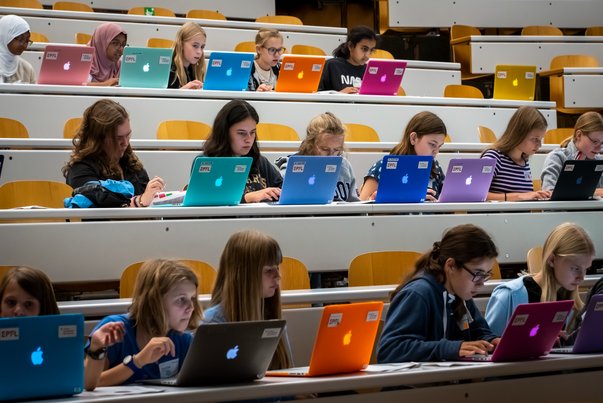

La Confédération joue un rôle central dans la maîtrise de la pénurie de personnel qualifié en fixant des conditions-cadres dans le domaine de la formation et de la recherche et en finançant des mesures d'encouragement MINT et d'égalité des chances. Il s'agit par exemple des mandats MINT confiés aux académies, de la stratégie en matière d'égalité 2030 ou des aides financières accordées dans le cadre des programmes d'encouragement de l'égalité entre hommes et femmes dans la vie professionnelle conformément à l'article 14 de la loi fédérale. Ces mesures visent notamment à augmenter la part des femmes dans la formation MINT et à encourager, au niveau suprarégional, les initiatives en faveur des femmes dans les professions MINT. L'approche coordonnée, qui relie et harmonise les différentes initiatives MINT, permet d'améliorer leur qualité et de passer à l'échelle. Cette coordination est décisive pour accompagner efficacement les parcours éducatifs et professionnels des enfants, des adolescents et des jeunes adultes - indépendamment de leur région de résidence - dans le sens de l'égalité des chances.
A l'instar d'autres pays fédéralistes comme les Etats-Unis ou l'Allemagne ,
nous recommandons le développement d'une stratégie MINT nationale pour la Suisse. Nous obtiendrions ainsi une feuille de route à long terme qui impliquerait tous les acteurs (cantons, partenaires sociaux, économie) et permettrait une orientation stratégique globale. Un centre de compétences pourrait se charger de la coordination des acteurs impliqués et contribuer à la diffusion des contenus MINT par l'échange de bonnes pratiques et la promotion de programmes communs. L'objectif est de promouvoir durablement les activités MINT et de permettre un accompagnement continu depuis l'enfance jusqu'au début de la vie professionnelle. Le renforcement de la coopération internationale et la garantie des subventions sont essentiels pour assurer le succès à long terme de l'encouragement MINT.
Il est également important de prendre des mesures pour augmenter le capital scientifique (Archer et al., 2015) de la population : outre l'intérêt et les connaissances scientifiques, il convient également d'augmenter la confiance dans les sciences et les ressources sociales et culturelles qui leur sont associées. Pour augmenter la valeur objective et subjective des sciences MINT dans la société, il faut mettre en évidence les défis sociaux que la science relève - également en ce qui concerne l'inclusion (Evagorou et al., 2024). En outre, la science doit être rendue tangible par des espaces et des manifestations supplémentaires qui permettent à la population de découvrir la fascination de la science. Cela peut se faire de la manière suivante :
Il est nécessaire d'agir dans le domaine de la politique familiale dans la mesure où la conciliation entre vie privée et vie professionnelle doit être davantage facilitée. De nombreuses études montrent que les attentes des femmes en matière de conciliation de la vie familiale et de la vie professionnelle influencent leur choix de carrière (Goldin, 2014 ; Cortes & Pan, 2016) et que ces considérations interviennent dès la phase d'orientation (Fassa, 2016). En facilitant l'accès au marché du travail et en supprimant les obstacles existants, les jeunes femmes pourraient être encouragées efficacement. Les mesures suivantes en font partie :
Tout le monde (et pas seulement les femmes !) profite de ces mesures.
Le milieu universitaire, en particulier, continue de souffrir de discriminations et d'inégalités de genre. Les mesures visant à améliorer l'égalité des chances comprennent:
En outre, les critères d'évaluation dans les carrières universitaires devraient être repensés, par exemple en proposant des modèles alternatifs pour les séjours scientifiques à l'étranger et en supprimant les limites d'âge dans les programmes de financement.